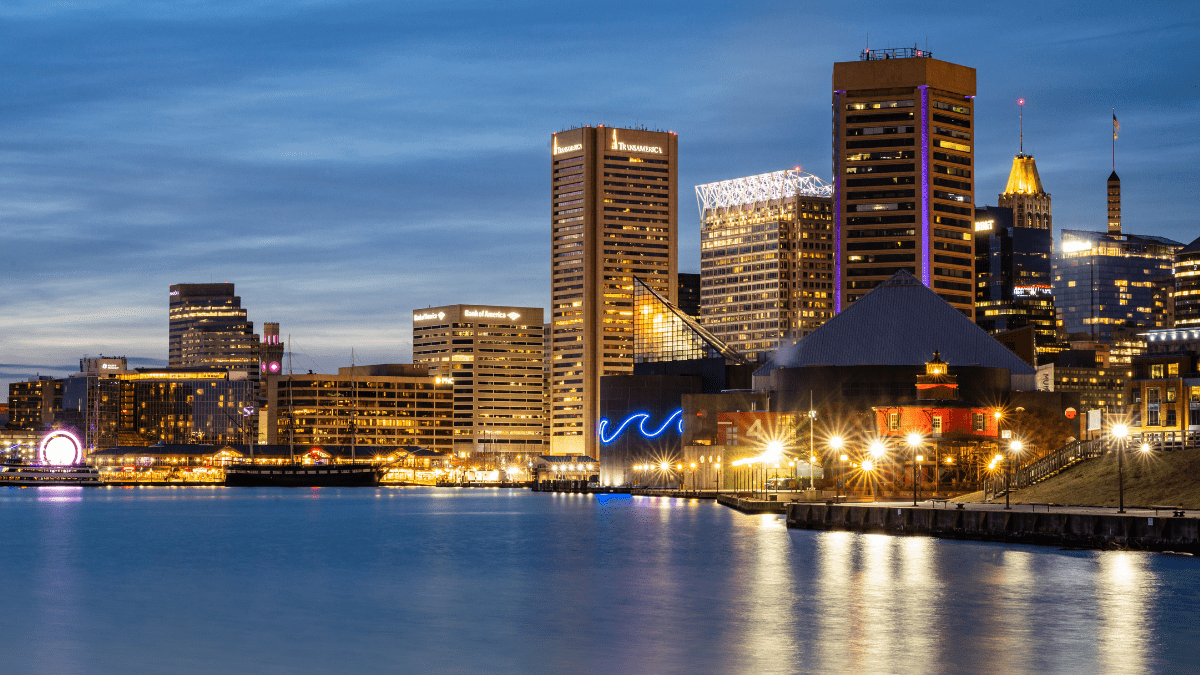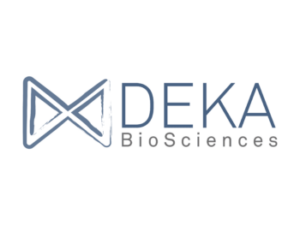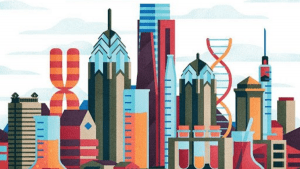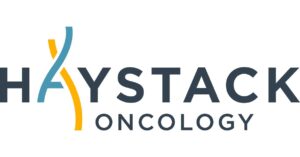
Life Science Development Projects Position Baltimore BioMed Ecosystem for Boom
The Baltimore biotech ecosystem is thriving. And new, big and bold life sciences development projects are in the works, leading many to project Charm City as the next sector of the BioHealth Capital Region (BHCR) to boom.
The Port Covington development project, which broke ground in March, is the largest development project in the U.S. that will forever change the city. And it’s just the latest addition to Baltimore’s storied history as a consistent producer of scientific innovation and great life sciences companies.
Port Covington, which sits along the South Baltimore waterfront, will be a growth catalyst for the City in general, as it will create approximately 1M square feet of apartments, offices and stores in what is now an underdeveloped area. Partners in the Port Covington revitalization effort also have their eyes on making the area a fulcrum of life sciences activity, adding another pillar to an already vibrant biocluster anchored by Johns Hopkins University, the University of Maryland, Baltimore, the MD BioPark, and a rich diaspora of serial investors and investment firms.
Phase 1 of the Port Covington project is already underway, and there are proposed plans to build 170,000 square feet of lab, office and manufacturing space to keep successful startups in Baltimore and attract a top tier biopharma tenant to the area. Weller Development, which is backed by Kevin Plank’s Sagamore Ventures, has attracted the interest of one of the leading life sciences real estate developers Alexandra Real Estate to build what will be a six-story life sciences building replete with desperately needed wet lab and manufacturing space.
According to some estimates Baltimore’s wet lab space is 100% leased, and manufacturing capacity industry-wide is hard to come by.
In the meantime, Baltimore City Garage—located on the waterfront—is taking the lead in bioscience incubation and development with the support of life sciences investment group South Duvall and Plank’s Sagamore Ventures. City Garage, South Duvall and Sagamore have committed to building 100,000 square feet of lab space, three-quarters of which should be delivered in the near future. City Garage is already home to the work-share space Betamore as well as the Launchport, an incubator focused on supporting early-stage MedTech companies.
In any other city, adding 170,000 square feet of lab and manufacturing space would be the first pillar of a nascent Biohub.
For Baltimore, the Port Covington project will build upon an already established, consistently productive bioscience foundation. This new lab and manufacturing space creates critical space for the cluster to expand; it will keep successful startups home and attract more established biopharma companies to the area.
Port Covington, Johns Hopkins University, the University of Maryland, Baltimore, the MD BioPark and a strong core of investors will make Baltimore an even bigger player in the BHCR and on a national scale. Let’s take a quick look at the anchors of the Baltimore biocluster to which Port Covington will soon be added.
Johns Hopkins University
In addition to being one of the premier research universities in the world, Johns Hopkins University (JHU) consistently produces outstanding life science technologies and innovative scientist-entrepreneurs; it is also a tech-transfer hotbed and the birthplace of myriad Maryland startups that are still emerging and filled with promise or that have gone on to become established, successful companies.
JHU has become a launch pad for new cancer detection technologies, much of which is coming out of the work happening in Dr. Bert Vogelstein’s lab. Dr. Vogelstein is the co-founder of PGDx, which launched in 2015 and was acquired this year by LabCorp for $575M, and Thrive Earlier Detection which launched with a $110M Series A and was recently acquired by Exact Sciences for $2.15B.
Another JHU spinout, Delfi Diagnostics, raised a $100M Series A round in 2021 for a new kind of test in the area of liquid biopsy, which can detect cancer from a blood sample using machine learning. Delfi was founded by Dr. Victor Velculescu, who is also a co-founder of PGDx. Other recent notable JHU-supported companies include companies such as Sonavex, LifeSprout, Thrive, Protenus and Sonavi Labs.
JHU is also home to several important support ecosystems for the Baltimore Biohub.
The JHU Science & Technology Park is a mixed-used development that is home to approximately 40 life sciences and research companies that utilize the park’s lab and office space and enjoy proximity to one of the world’s greatest research universities and its rich pool of talent and tech. The Park is home to Vita Therapeutics, elixirgen and WindMiL Therapeutics, among others, and several diagnostics companies.
What’s more, JHU’s Technology Ventures FastForward incubator program has strategic hubs across Baltimore. The program is designed to provide healthcare, drug development, manufacturing and IT startups with a coordinated suite of resources that can propel growth and get them to market. The program currently supports approximately 160 startup ventures, many of which are life science-focused. Since 2014 FastForward companies have raised about $3B in cumulative venture funding, according to the incubator’s website. The incubator also includes JHU’s i-corps program, which has been a valuable tool to startup entrepreneurs.
In 2018, FastForward helped the creation of eight startups and saw more than $451 million in follow-on funding raised by 31 startups. Notable FastForward startups include Gemstone, Pathovax, Avidea Technologies and Renalert, among others.
FastForward has a suite of services for their startups to help them to focus on their business and gain the knowledge and guidance they need to succeed. Services range from mentoring, access to students and researchers, and an onsite stock-room managed by Thermo Fisher.
The University of Maryland, Baltimore
The University of Maryland, Baltimore (UMB) has a long and storied history of scientific innovation and technology development. In addition to JHU, UMB is another critical force behind Baltimore’s growing life sciences cluster. UMB is home to leading-edge research, as well as three catalysts for the Baltimore biotech hub: the UM BioPark, The Grid program and UM Ventures.
The UM BioPark is located on the west side of the University of Maryland, Baltimore campus in downtown Baltimore. The BioPark will boast 2M square feet of lab and office space and 12 buildings when fully completed. The BioPark, which is managed by the UMB Health Science Research Park Corporation (RPC), was designed to become the center of a science community of both early-stage and high-growth life science companies.
The BioPark provides a number of centralized resources that can accelerate life sciences businesses, including workforce development programs, its BioInnovation Center, and proximity to the talent and tech emerging from the University of Maryland, Baltimore.
The BioPark is currently home to approximately 15 life sciences-related companies, including Catalent, Emit Imaging, and IRAZÚ Bio, as well as the MedTech startups JuneBrain NextStep Robotics and ARMR Systems.
The BioPark is the original anchor organization that helped spark the current interaction of the Baltimore biocluster. Since the early 2000s, the BioPark has helped create scores of jobs, generated approximately a half-million dollars in capital investment, revitalized a once-downtrodden section of Baltimore, and provided invaluable support to emerging companies across the life sciences, service industry, research, and development sectors.
UM Ventures is a partnership between UMB and the University of Maryland, College Park, that is part of the MPowering the State initiative. UM Ventures works to commercialize discoveries by supporting student and faculty inventors and entrepreneurs and connecting them to external investors. UM Ventures has a strong focus on technology licensing and securing funding for promising startups.
In addition, UMB is home to UM Ventures’ The GRID (Graduate Research Innovation District), which is another Baltimore biotech hub innovation space designed for startups and entrepreneurial ventures. The GRID is backed by a partnership between the Center for Maryland Advanced Ventures (CMAV) and the University of Maryland Graduate School and will support entrepreneurs through education, early-stage funding and workshop programming.
The Baltimore Venture Funding Community
Baltimore life science companies receive venture funding and financial support from private investors investment firms from across the U.S. and the globe, including TEDCO and others. These companies also receive robust funding from Maryland state government entities as well. However, Baltimore life sciences companies also benefit from funding streams delivered by local investment groups.
Funding support from groups like the East Baltimore Development Company, which is a major partner in JHU’s Science & Technology Park, and Abell Partners, which directs 95% of its investments to Baltimore, and others are critical to the sustained health of the Baltimore life sciences ecosystem. Abell Partners, for example, has invested in ARMR Systems, LifeSprout, NextStep Robotics, Sisu Global Health and ReGelTech, to name just a few organizations.
The University of Maryland System’s Maryland Momentum Fund has been a stalwart in the region for years, providing funding to some of Baltimore and Maryland’s most promising. emerging life sciences organizations. In addition, the biotech venture arm of Camden Partners, Catalio Capital Management, is very active in Baltimore and the BHCR. Catalio Capital’s portfolio includes Baltimore life sciences companies like Thrive Earlier Detection, Sisu Global Health and LifeSprout. Bluefield Innovations is another important funding player in Baltimore; Bluefield Innovations was formed by Deerfield Management and JHU in 2017 to support investment in early stage therapeutics.
Having anchor investment groups committed to the growth of the Baltimore biotech hub is an invaluable asset, particularly when paired with the existing life sciences pillars and a new one, Port Covington, on its way.
With a strong existing life science foundation in place, and new lab and biotech manufacturing space coming online soon along the South Baltimore waterfront, the stars are aligning for the Baltimore biocluster. Augmenting Charm City’s life sciences cluster will not only be great for the economic growth of the City, but also an integral component of the BHCR’s push to ascend the ranks of global biocluster.
- About the Author
- Latest Posts
Steve brings nearly twenty years of experience in marketing and content creation to the WorkForce Genetics team. He loves writing engaging content and working with partners, companies, and individuals to share their unique stories and showcase their work. Steve holds a BA in English from Providence College and an MA in American Literature from Montclair State University. He lives in Frederick, Maryland with his wife, two sons, and the family dog.







